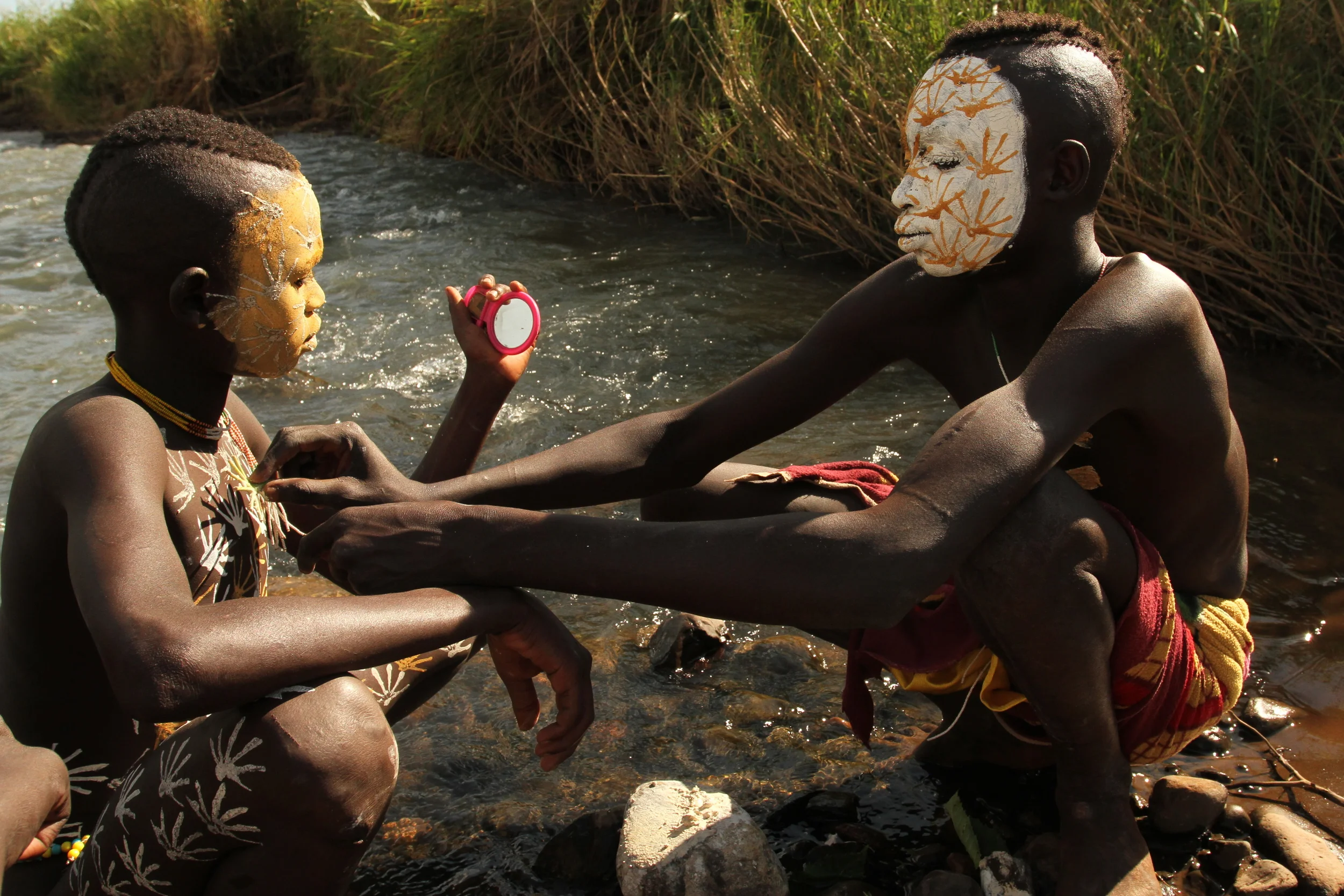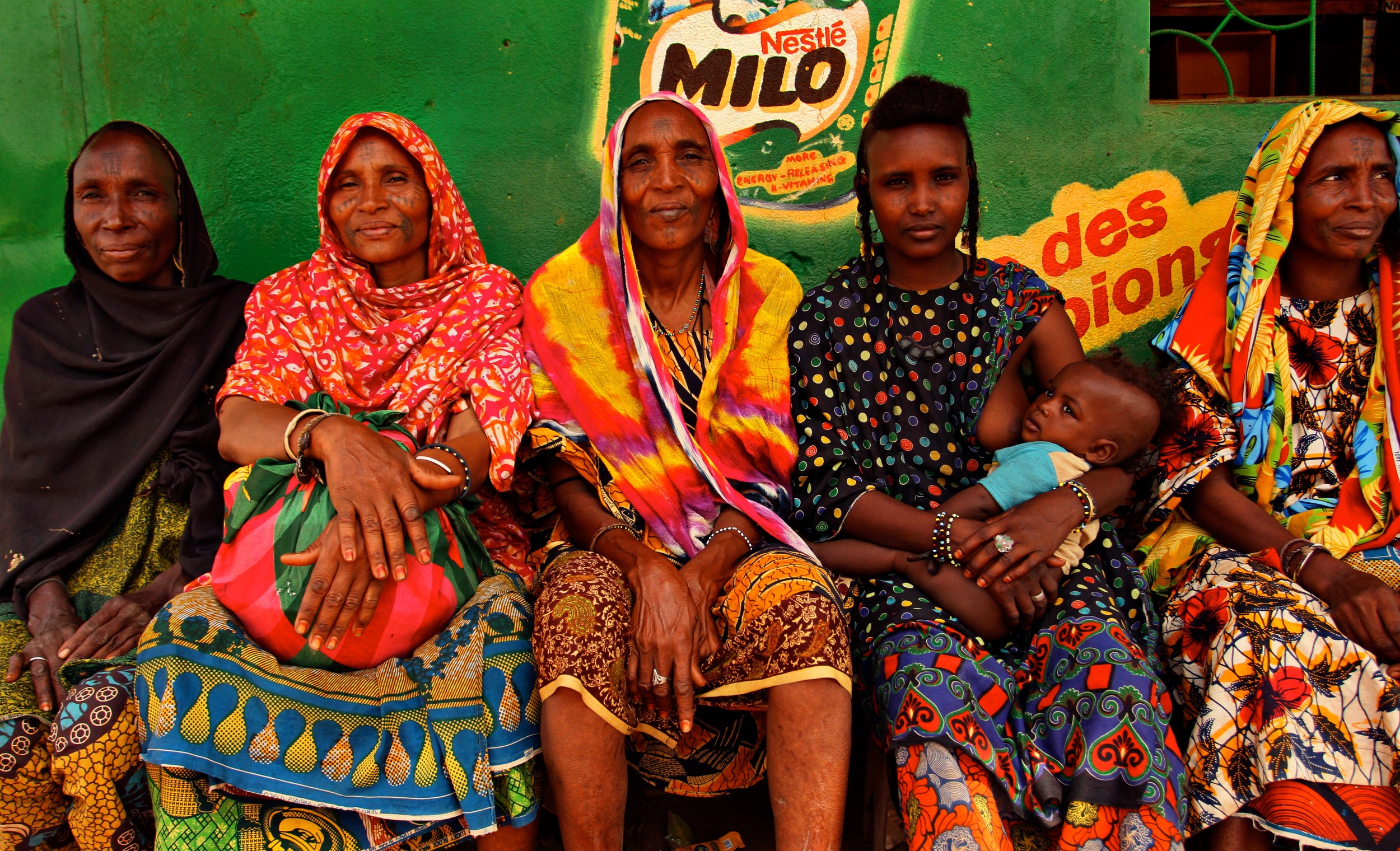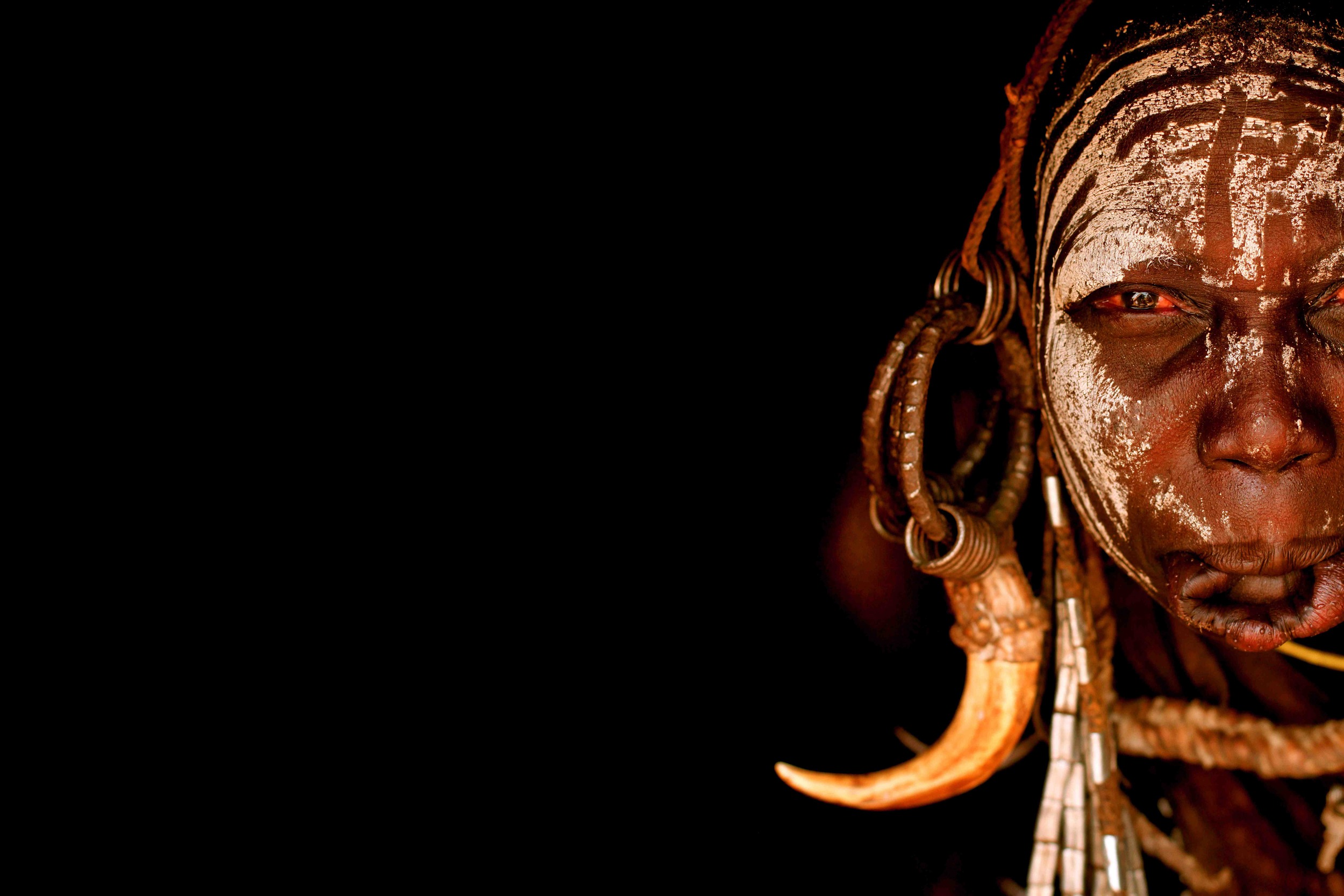
Mursi Shadows
(Near Jinka, Ethiopia)
The Omo Valley’s most legendary warrior tribe is the Mursi.
They live in the barren environment outside of the regional capital, Jinka.
Often embroiled in tribal warfare with the Hamer and Karo tribes, the Mursi is well-known for their aggression.
The women, similar to the Suri, wear elaborate headpieces and lip plates, and live harsher lives in comparison with other nearby tribes.
The violent nature of the Mursi means their tribal numbers are declining more rapidly than their Omo Valley counterparts.
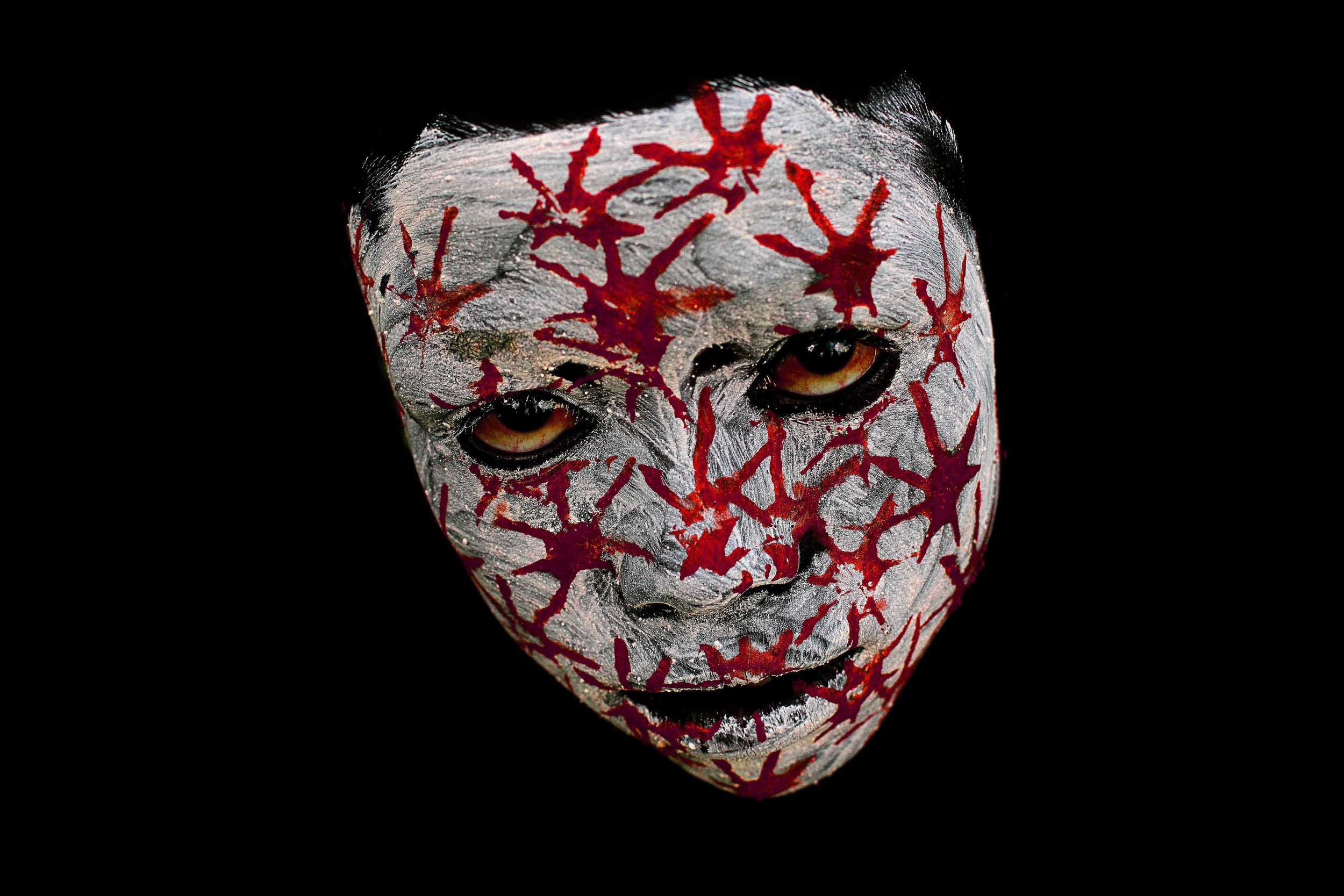
Suri Ghost
(Kibish, Ethiopia)
The Suri is a tribe like no other.
They have no religion or organized power systems. they are proudly self-sufficient and enjoy a high level of isolation.
It takes three days to reach their villages, nestled in one of the most remote regions of east africa.
Military guards are required to travel into the area. cross border raids and incessant tribal warfare is a reality.
But reaching the Suri, is an experience like no other. they are one of the great, remaining tribes of the world.

Suri Joy
(Kibish, Ethiopia)
The suri are located in one of africa’s least accessible terrains.
their home is on the treacherous border between ethiopia and south sudan.
It’s here the suri lead a basic existence in a lawless environment.
the harsh world around them means the suri must be a warrior tribe.
Indulging in violent local sports and ritual scarification, pain is a welcomed part of the social structure.
Facial paints and scars are often ritualistic and are used to attract women and intimidate enemies in battle.
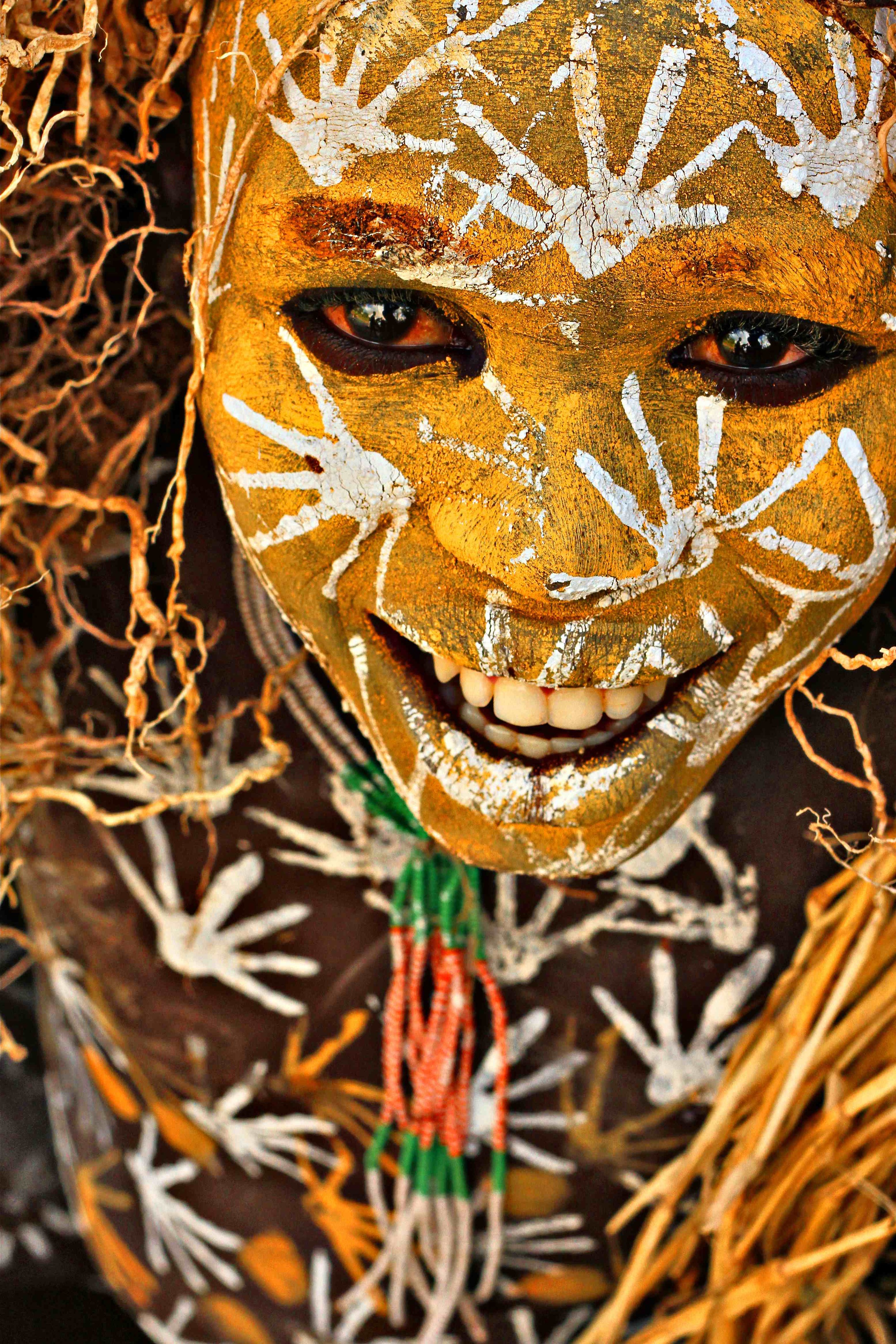
Suri Smile
(Kibish, Ethiopia)
It took three long days of driving on dirt roads to meet the suri tribe. we had armed guards for sections of the trip.
The community is nestled in one of the toughest and most remote places on earth - the ethiopian/sudanese border.
Despite the harsh conditions, the suri take great pride and joy in decorating their bodies. this young suri boy is covered in yellow and red ochre from a creek bed near our camp.
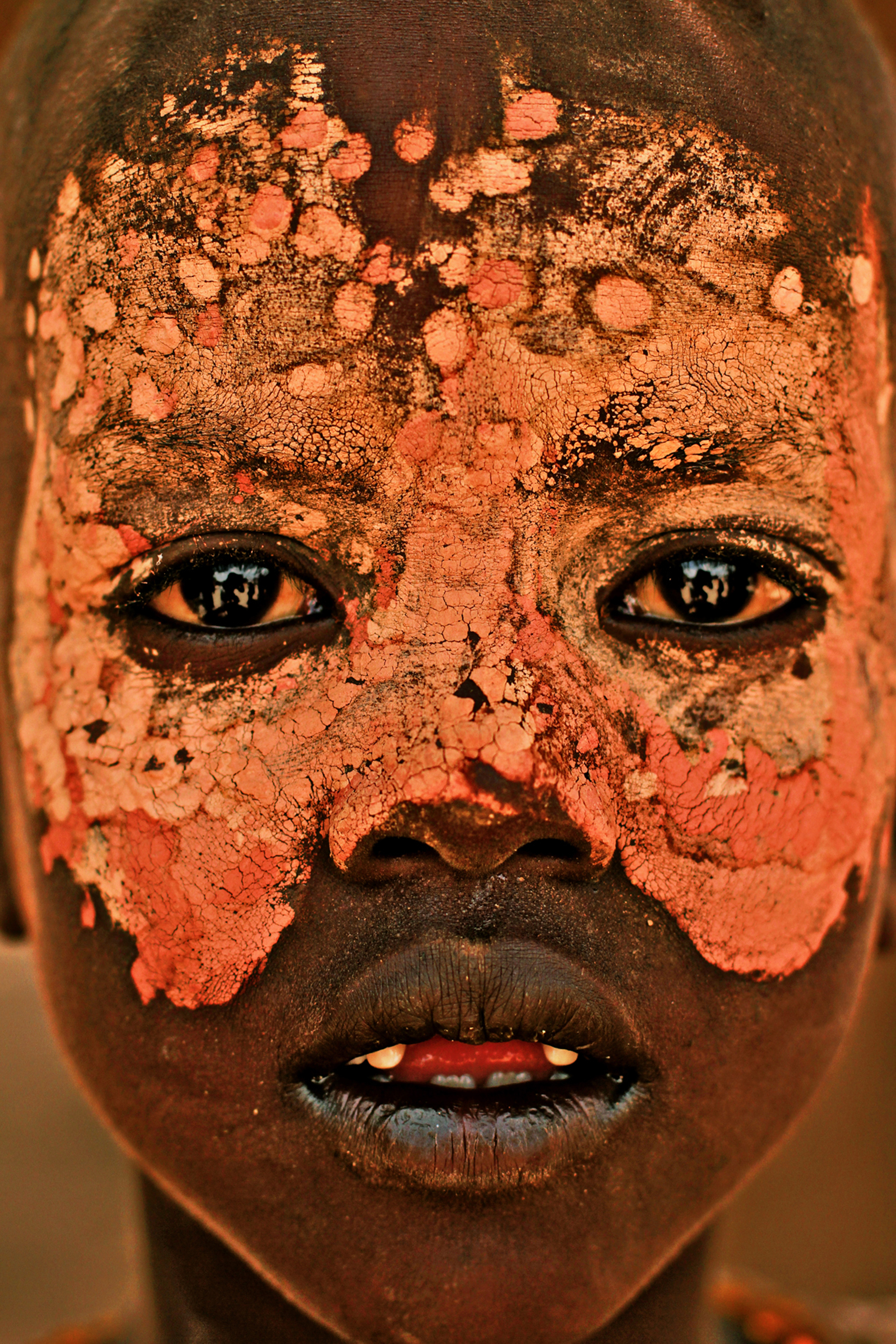
Arbore Mask
(Near Turmi, Ethiopia)
The Arbore are the Omo Valley’s dancers.
The colouful people believe dancing and singing eliminates negative energies and brings good luck.
The women of the tribe cover their heads with a black cloth but are known for their colourful jewellery.
Young children, like this boy, are known to wear shell-type hats and face paint. The crude form of body paint is made from soil and rocks found in the area.
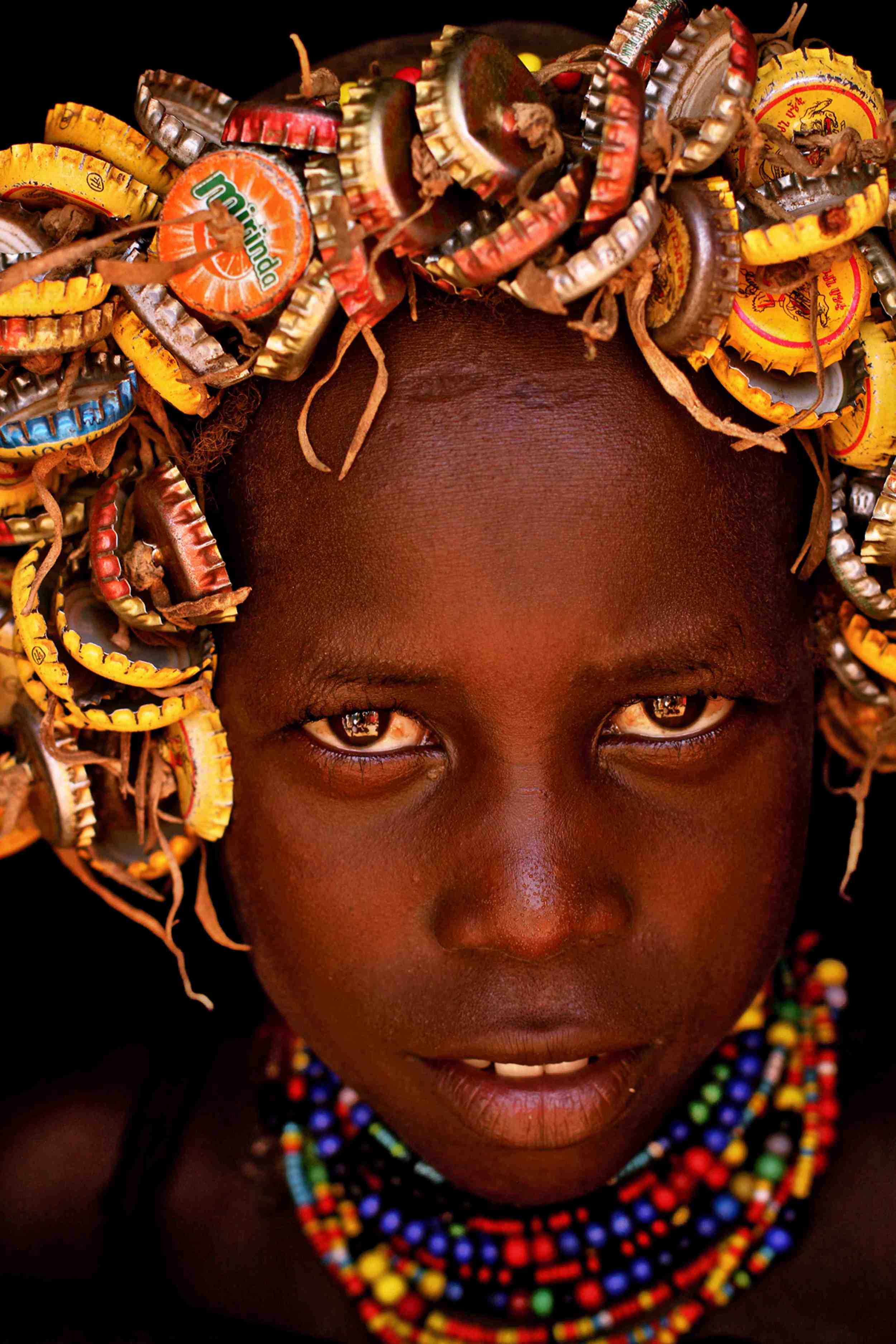
Dassanech Crown
(Omorate, Ethiopia)
The Dassanech are desert dwellers. They exist in the barren wasteland that straddles the border between Ethiopia and Kenya.
Closely related to the famous Turkana people, they live basic semi-nomadic lives in a tough environment.
The bottle-top headdress is the fashion accessory, which has made the Dassanech a photographer’s dream.
The tribe trades goods for bottle-tops to make the ‘crown’.
The tribe is also renowned for hunting crocodiles in Lake Turkana and the Omo River.
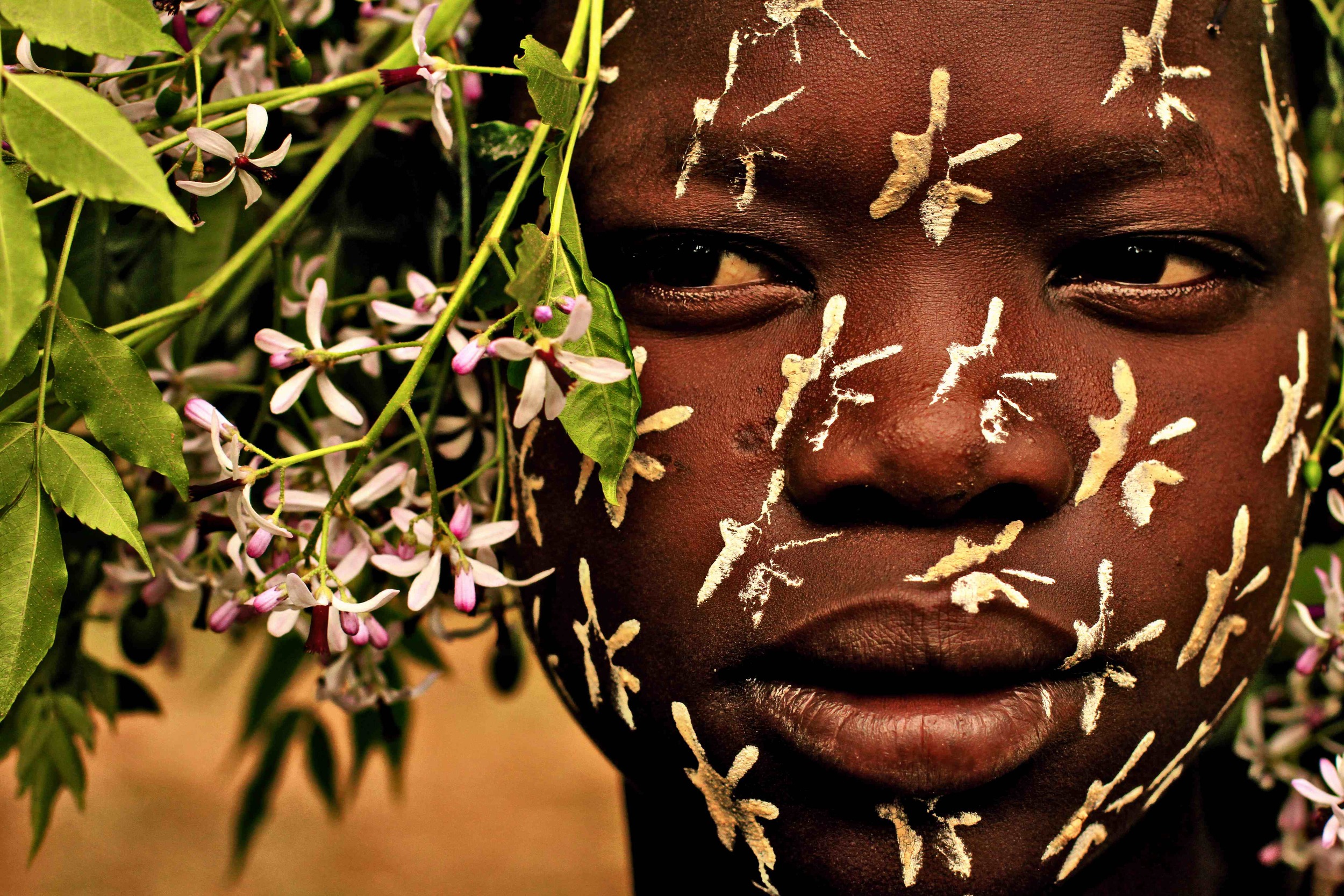
Suri Flowers
(Kibish, Ethiopia)
In suri culture, beauty is everything.
Lip plates, scarification, facial paint and flowers are used to enhance a woman's appearance.
Younger girls grind down local rocks to create basic paint supplies and apply them in various designs.
Flowers are used to complete the process.
The paint is often applied using sticks, bottle tops and bullet cartridges.
The suri take great pride in decorating their bodies, and it's not uncommon to see tribes-people carrying small mirrors. vanity is a human trait.
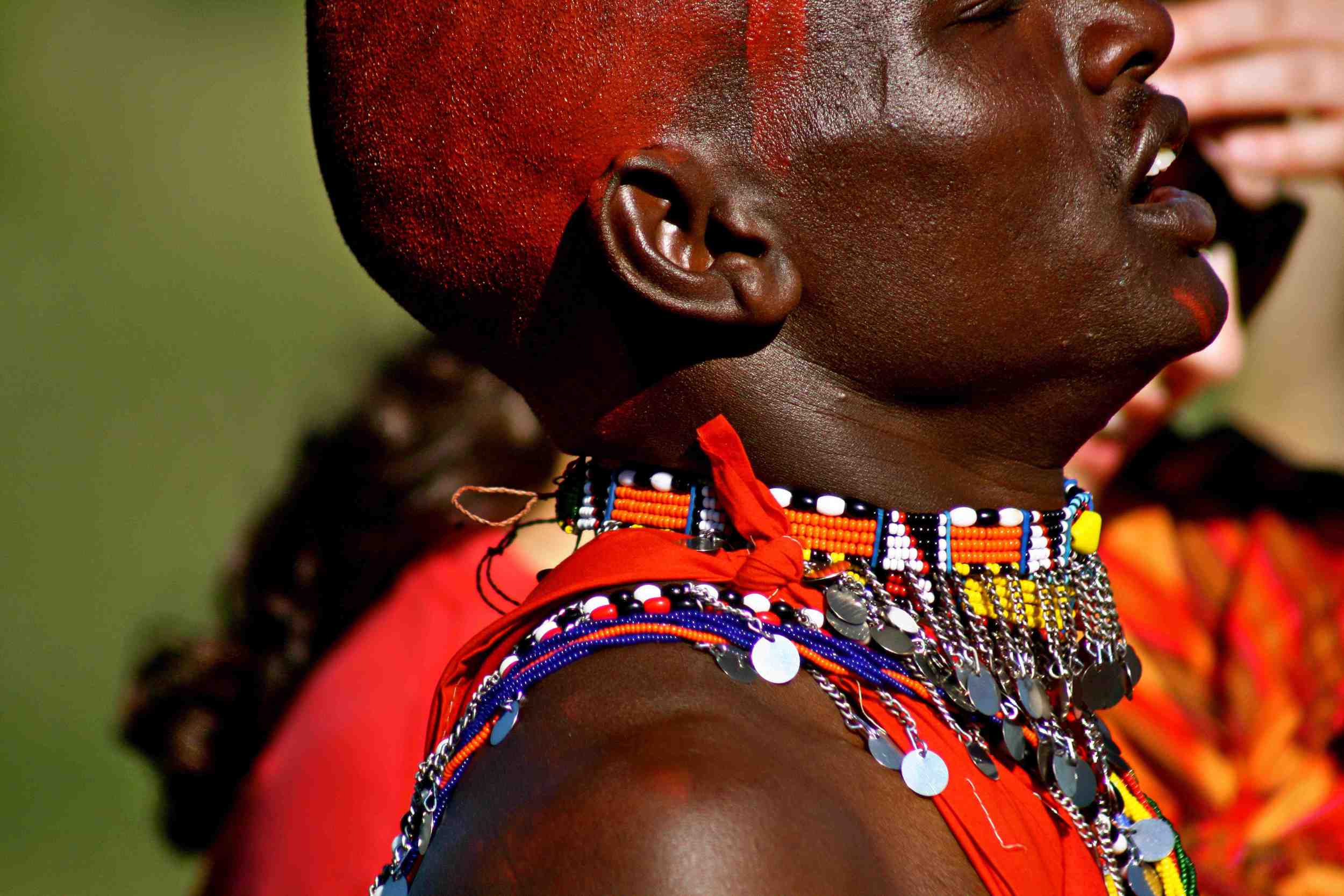
Maasai Warrior
(Maasai Mara, Kenya)
The Maasai is Africa’s most recognizable tribe, existing in the cradle of East Africa’s Great Rift Valley.
The most celebrated aspect of the Maasai culture is the warrior class.
Maasai men are first and foremost warriors. They exist to protect their tribe, their cattle and their grazing lands.
Warriors are known for their elaborate fashion, which aims to look both fierce and beautiful.
Maasai boys usually tend to the livestock for eight years and undergo a traditional circumcision ceremony before becoming a warrior.

Arbore Stilts
(Lower Omo Valley, Ethiopia)
Out of nowhere this boy and his mate stepped onto the road in stilts. they performed a special ‘welcome dance’ for us and laughed and joked the whole way through.
It’s common for omo valley kids to do everything they can to grab the attention of the passing ‘faranji’ (foreigners).
Around the next corner we passed a boy selling wooden ak-47s and another leading a baboon on a lead.
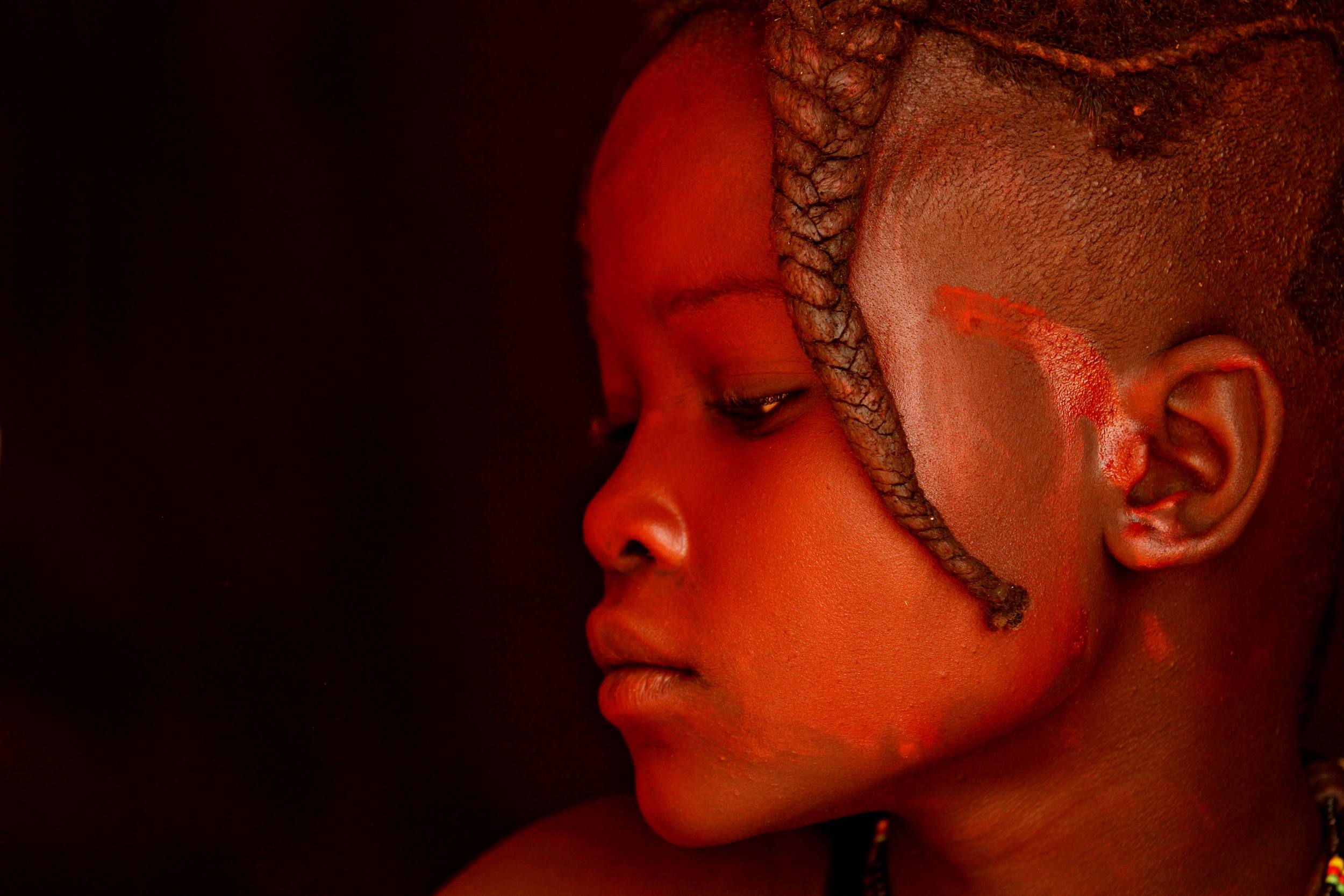
Himba Paint
(Kamanjab, Namibia)
The Himba can be identified by their hairstyles.
The chosen look indicates age and social status within the tribe.
Female children usually have two braids, while a boy has just one.
Once women in the tribe are married their hair becomes far more elaborate. Extensions are used, usually made from donkey hair.
The extensions are covered in butter fat and ochre, giving the Himba a very definitive and reddish look.
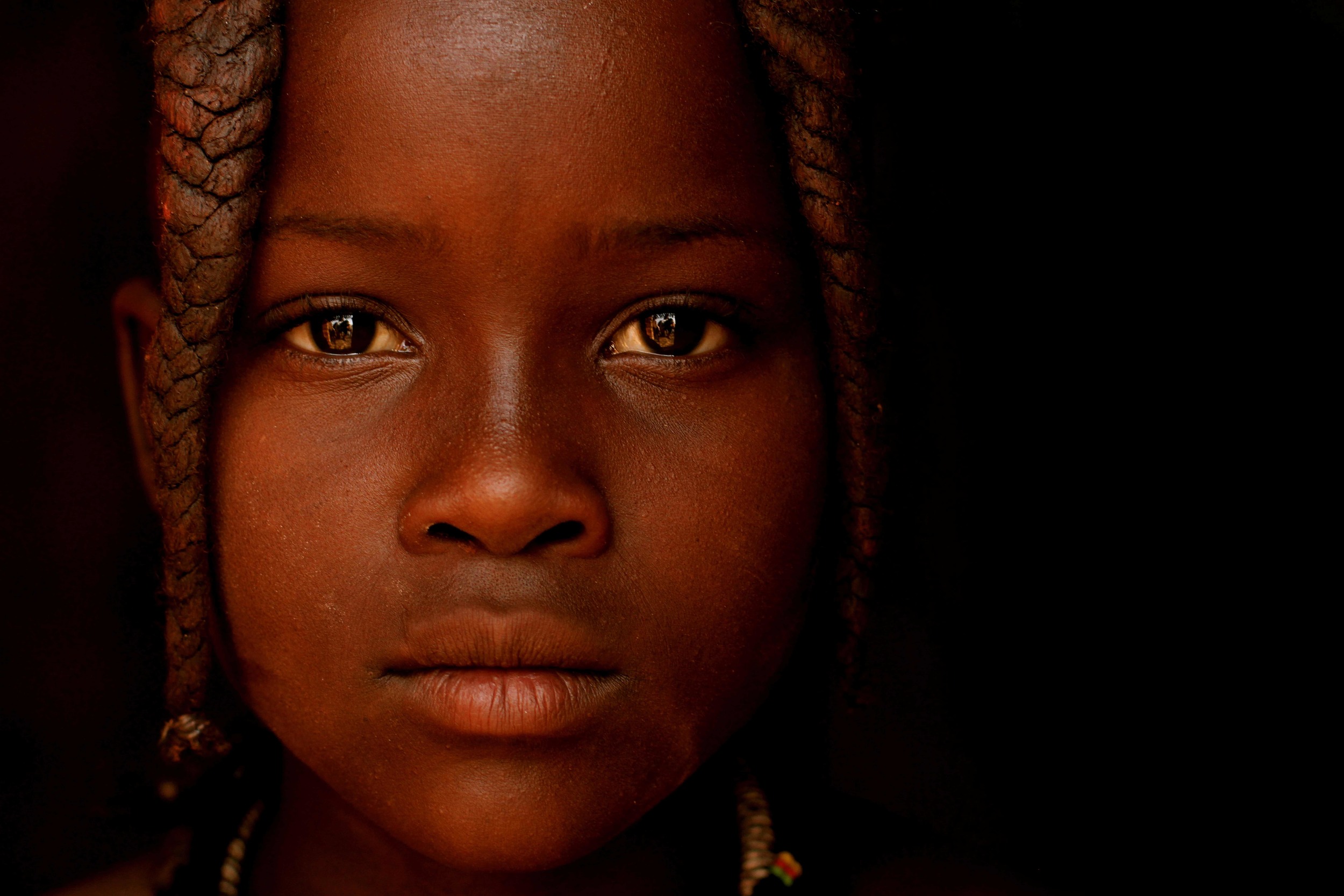
Himba Pride
(Kamanjab, Namibia)
The Himba are one of the proudest tribes in Africa.
It doesn’t take long before you are sucked into their way of life – a basic, slow-paced existence.
Days are spent tending goats and looking after the village’s numerous children.
The Himba have clung to their traditions, wearing very little clothing except for a loin cloth made from animal skin.
The women of the tribe wear specific jewellery, which signifies their marital status.
Photographing the Himba is one of Africa’s great experiences.
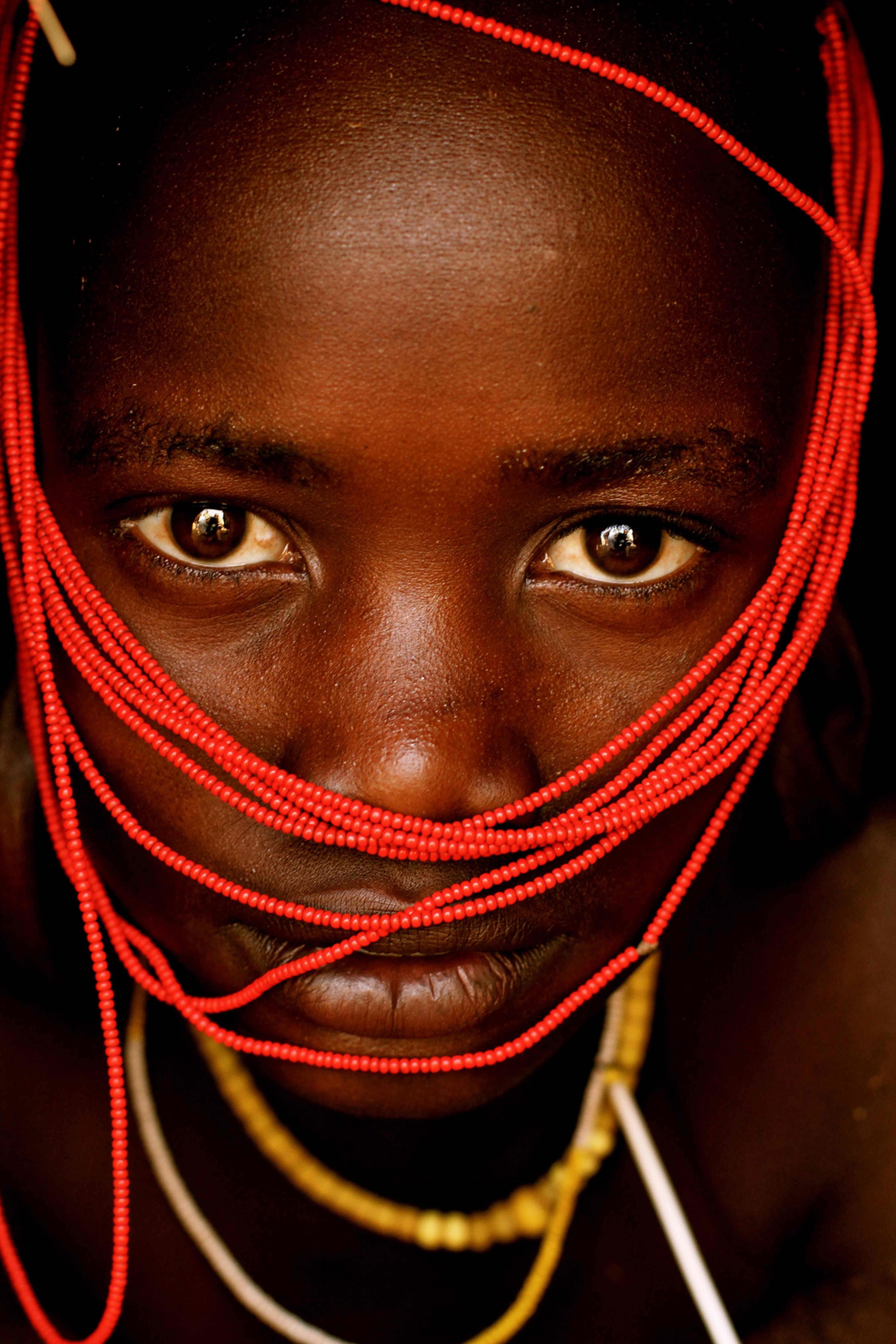
Mursi Fashion
(Near Jinka, Ethiopia)
The Mursi is a warrior tribe, but they are also elaborate dressers.
Warthog tusks, metal rings and rope are used in a variety of ways.
This young girl uses beads to cover her head, a simple design employed by younger women to enhance colour.
Women of the Mursi also insert wooden and ceramic plates in their lips, similar to the Suri tribe.
The young face in this photo is still untouched by the tribal traditions she will undergo in the next few years.
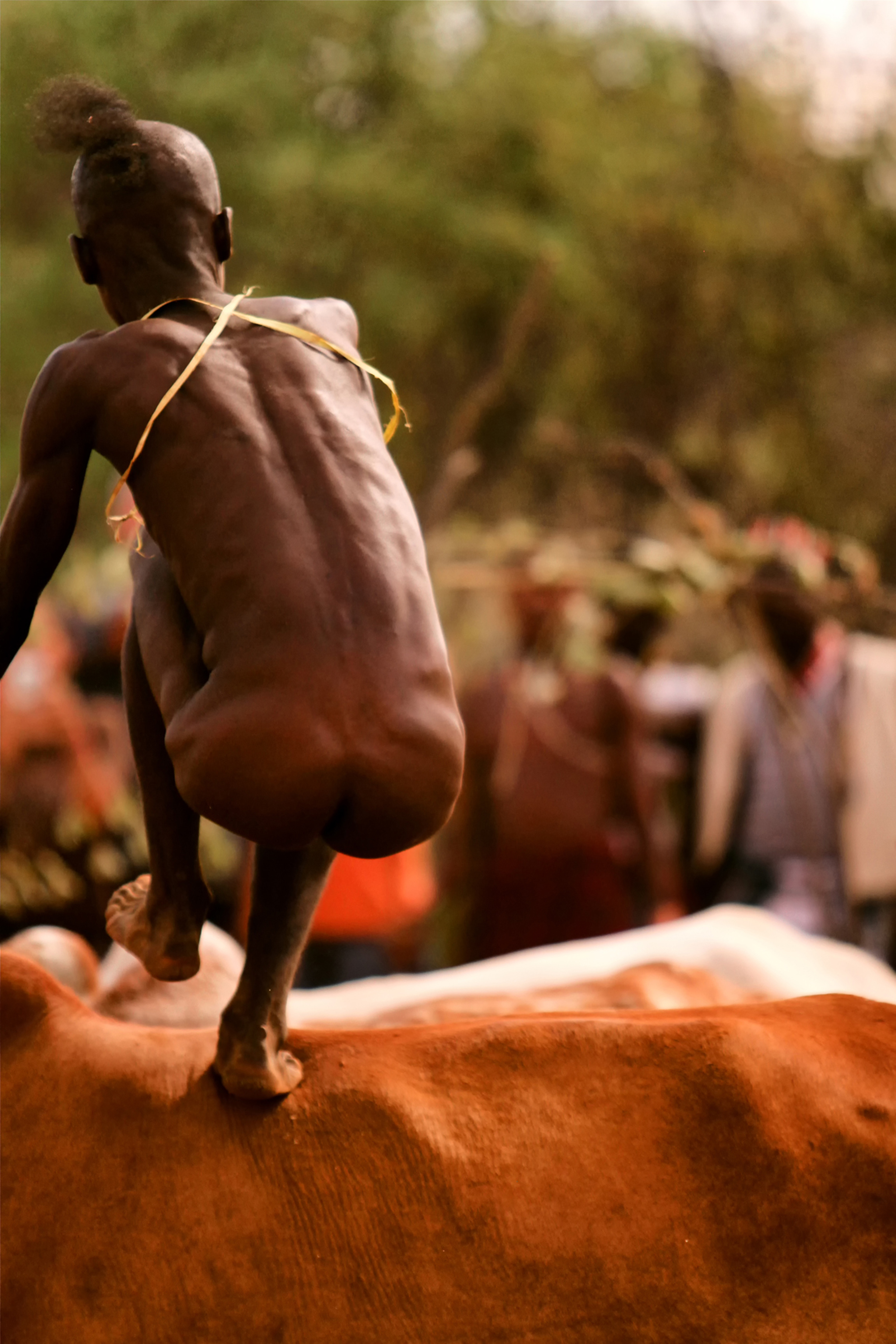
Hamer Bulljumper
(Near Turmi, Ethiopia)
The Hamer are the Omo Valley’s largest tribe. They are a people of staunch tradition and long history.
For young men, the bull-jump is their gateway into manhood.
In this age-old ceremony, the boy is required to strip naked before running over the backs of six or more bulls four times.
A successful attempt means the boy is given an AK-47 and is now a man and can marry and raise a family.
The ceremony also involves the females from the boy’s family being ritualistically whipped, which shows their devotion to the young man.
The process can be quite confronting for outsiders.


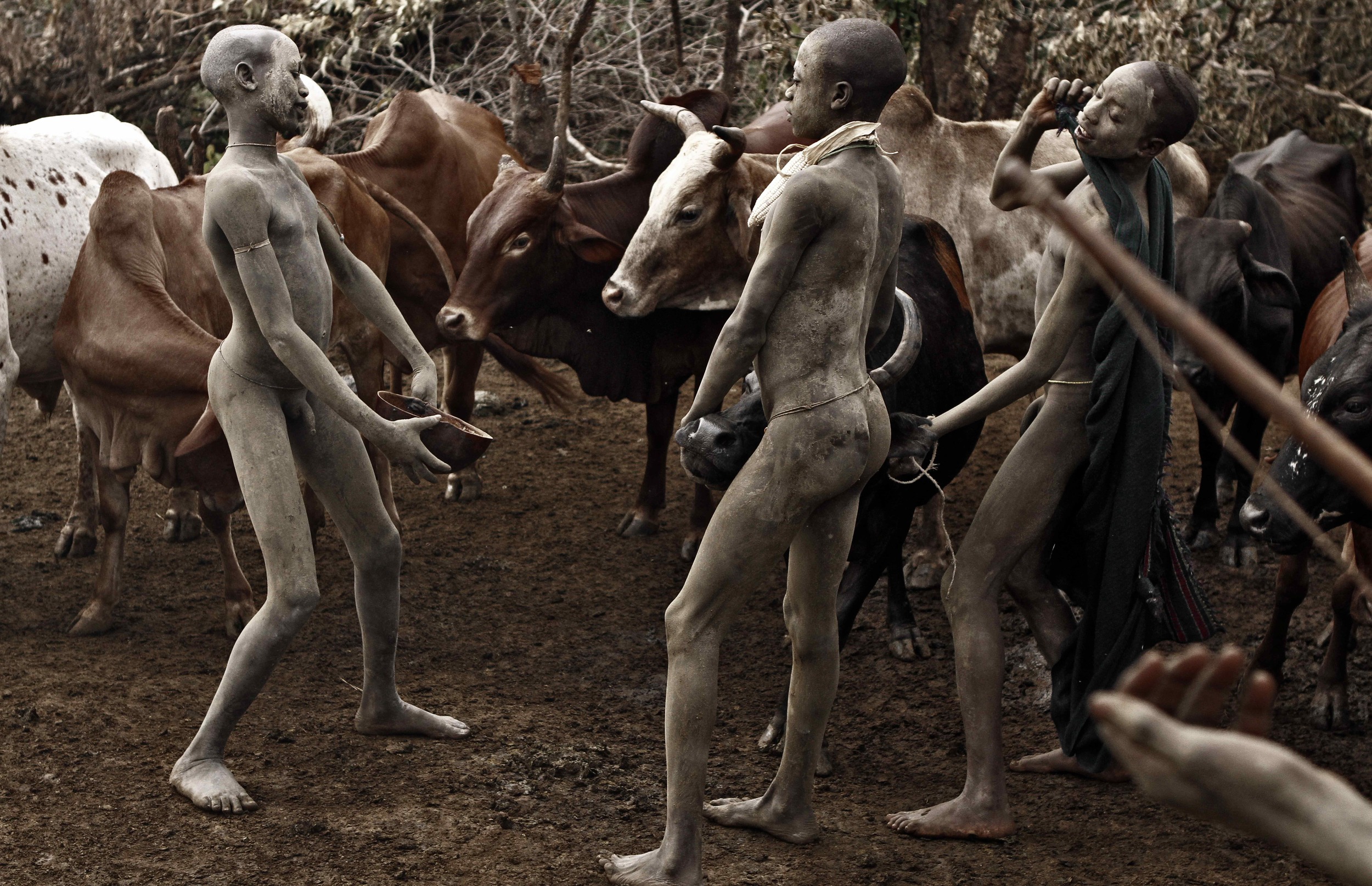
Suri Cowboys
(Kibish, Ethiopia)
These cowboys are around 12-years-old and are in charge of 200-head of cattle. the cowboys wear nothing but a string of beads around their waists.
They cover their faces and bodies with snow-white ash from burnt cowpats to sterilize their skin against insects, parasites and the sun.
The boys sleep in a small manger in the yards and live on cow’s milk, corn and porridge. they showed us how they bleed the animals – by harmlessly shooting an arrow into the jugular vein - and get just enough blood to feed the four boys.
The boys don’t go to school. they will progress into cattle herders once they’ve completed their ‘cowboy’ years.
